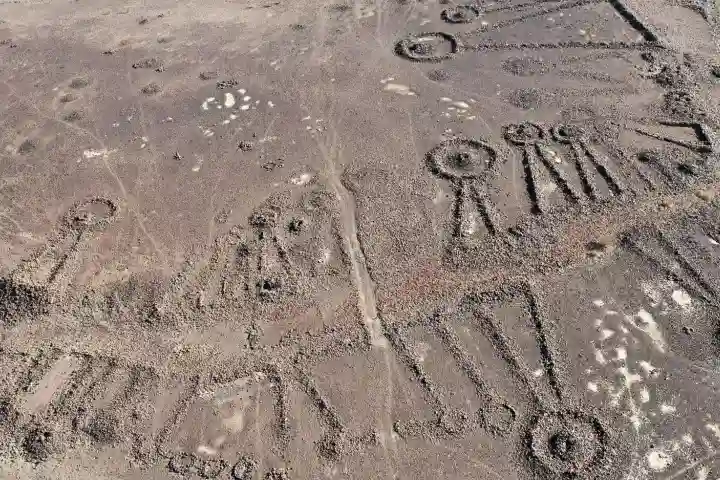Saudi Arabia has a vast archaeological treasure trove that is yet to be explored. One such came to light recently when archaeologists uncovered 4,500 year old “funerary avenues” which ran along the stone tombs that were shaped in pendant form and covered a distance of 170 kilometres according to a report in livescience.com.
The reason for referring to them as funerary avenues stems from the fact that they are located besides tombs though it is not certain if funeral processions took place there. The experts feel that these could have been linking oases and used as a network of highways.
As per Mat Dalton, the lead author of the study, the network may have served the purpose of travelling over long distance. "By following these networks, people could have traversed a distance of at least 530 km [330 miles] from north to south. There are also hints of such avenues in southern Saudi Arabia and in Yemen. These require further research but could suggest even longer-distance movements by ancient populations," wrote Dalton in an email to Live Science.
Dalton is a research associate at the University of Western Australia and the study was published in the journal The Holocene.
Outline of some of these avenues was done with red rock while others in words of Dalton were “simply formed as the ground was worn smooth by the footfall of ancient people — and especially by the hooves of their domestic animals.”
Also read: Digital tools help resolve mystery of Pharaoh Amenhotep I after 3,000 years
There is not much known about the rituals that were followed either at the tombs or the funerary avenues, Dalton said. What makes the job further tough is the fact that the human remains in the tombs are in a bad condition, and some have been looted also, leaving no artefacts for the experts to study.
Even though the details are scanty, Dalton said, “it's not difficult to imagine that the tombs were used to remember or commemorate the dead, especially as the descendants or relations of those buried within them would have probably walked past them frequently during the course of their everyday lives.”
He went on to add: "We might even envision funerary processions along avenues from settled oases towards the tombs, but this is purely hypothetical until we find more evidence.”
Also read: Neanderthals used fire and ingenuity to hunt birds
Parallel to the construction of these tombs and avenues, pyramids were being built by Egyptians while Mesopotamians were erecting mega cities and ziggurats – big temples which were pyramid shaped. Yet, Dalton feels that it was not these developments that spurred people of Saudi Arabia to build these structures. “We think that this phenomenon was certainly an indigenous development.”
He observed that people in the region were known to build large structures made of stone for many years before Egyptians raised pyramids. The mustatils which were gate shaped structures were made 7,000 years ago.
Aerial photography, survey of the ground, excavations and satellite imagery were the tools used by the archaeologists for this study.




















